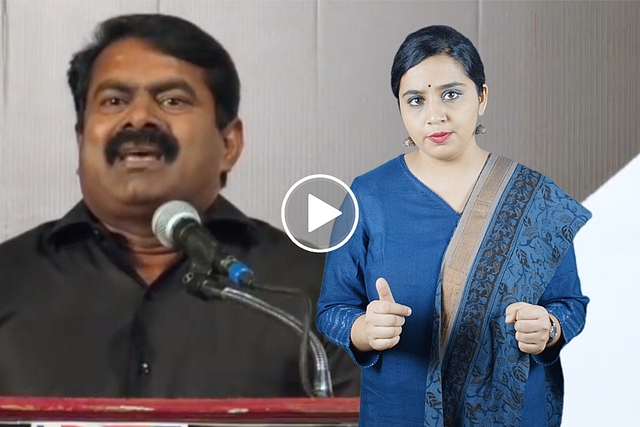
[Watch] In Tamil Nadu, ‘Breaking India’ Forces Lay Siege On Murugan
Video transcript:
Of late, a dangerous form of Tamil secessionism has been seeking to appropriate Murugan, a Hindu deity, worshipped widely in Tamil Nadu for at least over two millennia.
Murugan is the younger son of Shiva and Parvati. His other names include Subramanya, Kartikeya and Skanda.
The aim of this secessionist movement is to remove all the cultural and spiritual significance attributed to Murugan. Their claim? Murugan was originally a patriarch — a historical personality, and that the worship of Murugan is nothing but the worship of ancestors.
It is important to understand that such claims are essentially uninformed, unscholarly opinions of an intolerant fringe. Over the years, such fringe groups have emerged as ‘breaking India’ forces trying to attain critical mass in the political arena.
This so-called movement is led by Seeman, the founder-leader of the Naam Tamilar party. Seeman is a rabble-rousing Tamil chauvinist, one of the same fringe elements in mainstream Tamil politics. He not only advocates a separate racial and linguistic identity for Tamils but is attempting to distort their religious identity.
Seeman, whose original name is Simon, is not the first to appropriate Murugan as a non-Hindu, tribal deity. As early as the 1990s, John Samuel started using the Institute of Asian Studies in Chennai to push the same agenda in the academic domain. John Samuel conducted international conferences on Murugan — where papers were presented claiming that Murugan is not a Hindu god but the tribal ancestor of the Tamil people.
He attempted to separate Murugan from Hinduism — by fabricating a so-called pre-Aryan identity for Muruga-Skanda and delinking it from what he considers as the 'Brahminical features of the so-called Aryanised Skanda or Kartikeya or Subramanya. Soon, the pretence of any subtlety was dropped and openly evangelical agendas were peddled.
In 2001, John Samuel openly stated that Soma-Skanda, a famous form of Murugan worship throughout Tamil Nadu, was actually the representation of the Christian Trinity.
It is not an accident that John Samuel tried to reduce Murugan to a historical personality and then Christianise him. Seeman is today continuing John Samuel’s project in the political arena. Both are Christians who are using each of their domains – academic and political – to further a deeper evangelical agenda, subverting the spiritual core of Tamil culture. It can be observed that the Catholic Church continues to play a mischievous role in spreading hateful racist theories in the name of social justice. Almost five decades ago, the famous social reformer and educationist of Tamil Nadu, Chithbavananda, in his paper on Christian Hindu encounters, painfully pointed out the way Church officials had called the Dravidian movement a “time bomb placed in Tamil Nadu to destroy Hinduism”.
The Dravidian movement was given a lot of tactical but not overt Church support. While the Dravidian movement considered all Tamil Hindu culture as an Aryan Brahminical imposition, Seeman takes a more mischievous step. He claims that the original Tamil religion and culture were different and were corrupted by ‘Aryan Brahmins’. He claims Shiva and Murugan to be his ancestors.
This effectively reduces the spiritual aspects of Tamil culture to naught. So Shiva is no more the cosmic principle but an ethnic ancestral totem symbol. Similarly, traditional Tamil music and dance forms, temple architecture and literature — can all be reduced to ethnic elements and secularised.
This claim, where Hindu deities are posited as secular ethnic ancestors, plays directly into the Christian evangelical agenda. Because, these deities can then be secularised and eventually Christianised.